Q
How long does it take to charge a Kia EV6?
The charging time of the Kia EV6 depends on the type of charging equipment used and the battery capacity. Under the common 50kW DC fast - charging condition in Malaysia, it takes about 47 minutes to charge the standard - range version (58kWh) of the EV6 from 10% to 80%, while the long - range version (77.4kWh) takes about 73 minutes. If you use an 11kW AC home charging pile, it takes about 6 hours to fully charge the standard version and about 7.5 hours for the long - range version. If you have the opportunity to use a 350kW ultra - fast charging station, the long - range version can be charged from 10% to 80% in 18 minutes.
It's worth noting that the EV6 adopts 800V high - voltage platform technology, which significantly improves its charging efficiency when paired with high - power charging piles. At the same time, it is recommended that car owners charge their vehicles during periods with suitable temperatures, as the battery has the best charging efficiency at 25 - 35℃. In the hot climate of Malaysia, you can make good use of the vehicle's scheduled charging function to avoid the high - temperature period at noon. Additionally, regular maintenance of the battery management system can also maintain the best charging performance.
For consumers considering buying an electric vehicle, besides the charging time, they should also pay attention to the distribution of charging piles in different parts of Malaysia. Currently, the charging facilities in major cities such as Kuala Lumpur and Penang are relatively well - developed. Before a long - distance trip, it is recommended to plan your route through local charging map apps such as ChargeSES or JomCharge.
Special Disclaimer: This content is published by users and does not represent the views or position of PCauto.
Related Q&A
Q
What is the life expectancy of the Kia EV6?
As an advanced electric vehicle, the lifespan of the Kia EV6 mainly depends on the usage and daily maintenance of its battery pack. According to industry standards, the battery packs of modern electric vehicles can usually maintain a range for 8 to 10 years or about 160,000 to 200,000 kilometers under normal usage conditions. After that, the battery capacity may gradually decline to 70% - 80% of its original capacity, but it can still be used. Kia offers a battery warranty policy for the EV6 in Malaysia, generally covering 7 years or 150,000 kilometers, which provides additional protection for the owners. It is recommended that owners conduct regular battery health checks and follow the manufacturer's maintenance guidelines to extend the vehicle's lifespan. The motor and transmission system of electric vehicles have a relatively simple structure and low maintenance costs, which is also one of the advantages of the EV6 in long - term use. Regarding the climate conditions in Malaysia, the high temperature and humidity may have a slight impact on the battery performance, but Kia's battery management system has been optimized for such environments to ensure stability and safety. Overall, as long as it is properly maintained, the EV6 can meet the long - term vehicle usage needs of most users. Meanwhile, the environmental - friendly features and low operating costs of electric vehicles also make it a practical choice in the Malaysian market.
Q
Is the Kia EV6 safe in a crash?
The Kia EV6 performs excellently in collision safety. It received a five-star rating in the tests conducted by the European New Car Assessment Programme (Euro NCAP), which proves that it meets high standards in aspects such as adult occupant protection, child occupant protection, vulnerable road user protection, and safety assist systems. It especially shines in the frontal and side collision tests. The vehicle has a sturdy body structure and a quick - reacting airbag system, which can effectively protect the safety of passengers inside the car.
For Malaysian consumers, the EV6 is also equipped with a wealth of active safety technologies, such as forward collision warning, lane - keeping assist, and blind - spot monitoring. These functions can further enhance safety during daily driving.
In addition, the EV6 uses a dedicated electric vehicle platform, and the battery pack is protected by a sturdy frame, which reduces the risk of battery damage during a collision. This is also an important consideration in the safety design of electric vehicles.
If you're thinking about buying an EV6 in Malaysia, you can have confidence in its safety performance. At the same time, it's recommended that you take a test drive at an authorized dealer to personally experience its driving feel and the practicality of its safety features.
Q
Is the Kia EV6 a good car?
The Kia EV6 is an electric vehicle that has attracted significant attention in the Malaysian market. It has won the favor of many consumers with its excellent performance and advanced technology. The EV6 is built on the E-GMP electric vehicle platform dedicated by the Hyundai Motor Group, offering excellent range. It can reach up to 528 kilometers (WLTP standard), which is suitable for long - distance driving needs in Malaysia. Its fast - charging function can charge the battery from 10% to 80% in just 18 minutes, greatly reducing the charging waiting time.
In terms of the interior, the EV6 is equipped with dual 12.3 - inch curved displays and an Advanced Driver - Assistance System (ADAS), exuding a strong sense of technology. In terms of power performance, the EV6 GT version has a powerful output of 585 horsepower, and it can accelerate from 0 to 100 km/h in just 3.5 seconds, meeting the needs of users who pursue driving pleasure.
For Malaysian consumers, the EV6 also has good adaptability. Its chassis tuning can handle the local variable road conditions, and the battery system has also been tested in high - temperature environments to ensure reliability. In addition, Kia has a relatively complete after - sales service network in Malaysia, providing convenient maintenance support for electric vehicle users.
Overall, the Kia EV6 is an electric vehicle that combines performance, technology, and practicality, making it suitable for consumers who want to try electric vehicles without compromising on the driving experience.
Q
How much does it cost to replace a Kia EV battery?
The cost of replacing a Kia EV battery in Malaysia generally ranges from RM30,000 to RM60,000. The specific price depends on the vehicle model, battery capacity, and whether you choose the original - factory or third - party repair services. For example, the Kia Niro EV has a larger battery pack, so its replacement cost might be higher.
In Malaysia, the price of an EV battery usually includes the cost of the battery module, labor fees, and system inspection fees. Some repair centers may offer installment - plan payment options or warranty services. It is recommended that car owners consult the officially authorized service centers for accurate quotes.
Moreover, the lifespan of an EV battery typically lasts 8 to 10 years or 150,000 to 200,000 kilometers. Regular maintenance, such as avoiding excessive fast charging or long - term full - charge storage, can extend the battery's performance. If the battery capacity drops below 70%, car owners can consider having a professional inspection to determine whether a replacement is necessary. In some cases, only individual battery modules need to be repaired to cut down the cost.
Currently, the Malaysian government offers tax incentives for EVs, and there might be a battery replacement subsidy policy in the future, which is worthy of car owners' attention.
Q
What is the Kia EV6 equivalent to?
As a pure-electric crossover SUV, the main competitors of the Kia EV6 in the Malaysian market include models such as the Tesla Model Y, Hyundai IONIQ 5, and Ford Mustang Mach-E. These models also focus on high performance and long range, and they are similarly positioned. The Kia EV6 stands out with its 800V ultra-fast charging technology, a maximum driving range of 510 kilometers (WLTP standard), and the GT version's ability to accelerate from 0 to 100 km/h in 3.5 seconds. It is particularly suitable for the needs of Malaysian consumers in terms of charging efficiency and driving experience.
When considering price and configuration, the EV6 is positioned between luxury and mainstream brands in the local market. Its positioning partially overlaps with that of models like the BYD Atto 3 or Toyota bZ4X, but it emphasizes more on sporty design and a sense of technology. For Malaysian users, the advantages of the EV6 also include the potential price advantage brought by local assembly (CKD) and the 8-year battery warranty policy provided by Kia Malaysia. These factors make it a practical choice for mid - to high - end electric vehicles.
In addition, the V2L (Vehicle-to-Load) function of the EV6 is very practical in the many outdoor scenarios in Southeast Asia, which further enhances its market competitiveness.
Q
Can you charge a Kia EV6 at Tesla?
Yes, the Kia EV6 can be charged at Tesla charging stations, but you need to pay attention to compatibility issues. Some of Tesla's Superchargers in Malaysia have been opened for electric vehicles of other brands. You just need to use a suitable adapter or start the charging via the Tesla app. However, the charging speed may be affected by the matching degree between the vehicle and the charging pile protocol. The Kia EV6 itself supports the CCS2 charging standard, and Tesla Superchargers also adopt the same standard, so it is theoretically compatible. But it is recommended to confirm whether the charging station supports non - Tesla vehicles before charging.
In addition, apart from Tesla, there are also other operators such as ChargeEV, Gentari, and Shell Recharge in Malaysia's public charging network, which provide CCS2 - compatible charging piles. EV6 owners can also choose these charging stations for a more flexible charging experience. For electric vehicle owners, it is very important to understand the vehicle's charging standard and the distribution of surrounding charging facilities. This way, they can better plan long - distance trips and avoid charging anxiety.
Q
How often do you need to service a Kia EV6?
According to the official advice from Kia Malaysia, as a pure electric vehicle, the maintenance cycle of the Kia EV6 is different from that of traditional fuel - powered cars. It is generally recommended to conduct a routine inspection every 12 months or every 15,000 kilometers, whichever comes first. The main items include checks on the battery system, brake fluid, coolant, as well as the tire and brake systems. Since electric vehicles don't have engines and transmissions, there's no need to change the engine oil or oil filter, which can significantly reduce maintenance costs and time.
For Malaysian car owners, the hot and humid climate may affect the battery life and the electrical system. Therefore, it's advisable to regularly check the battery cooling system and the tightness of high - voltage lines to ensure the vehicle maintains optimal performance in high - temperature environments.
In addition, although the mechanical structure of electric vehicles is relatively simple, attention still needs to be paid to the replacement of the air - conditioning filter, especially in areas with relatively serious air pollution in Malaysia. This helps maintain the air quality inside the vehicle.
The intelligent connectivity system of the Kia EV6 also undergoes OTA remote updates. Car owners don't need to go to the service center specifically for software upgrades. However, if there are system abnormalities, they should still contact the authorized repair points in time for handling.
Overall, the Kia EV6 has a lower maintenance frequency and is more cost - effective. However, regular maintenance is still the key to ensuring vehicle safety and extending its service life. It is recommended that car owners strictly follow the maintenance plan in the official manual.
Q
What are the cons of the Kia EV6?
As a pure - electric SUV, the Kia EV6 has good performance and advanced tech features in the Malaysian market. However, there are also some drawbacks that need to be considered.
Firstly, there's the issue of charging infrastructure. Malaysia's public charging network is still under development, especially in remote areas. This could affect the convenience of long - distance travel.
Secondly, the price is relatively high. Compared with fuel - powered vehicles in the same class or some hybrid models, the selling price of the EV6 may exceed the budget of some consumers.
In addition, although the EV6 has a good range, in extreme weather conditions such as high - temperature environments, the battery efficiency may be affected to a certain extent. This is a common challenge faced by electric vehicles.
Finally, since electric vehicle technology is relatively new, maintenance may require specialized technical support. The after - sales service network in some areas may not be fully developed.
For Malaysian consumers, when considering purchasing the EV6, it is recommended to check the nearby charging facilities and repair points in advance to ensure the convenience of daily use. At the same time, they can also compare other electric vehicle models to choose the option that best suits their needs.
Q
How long will a Kia EV6 battery last?
The battery life of the Kia EV6 typically lasts over 10 years or about 150,000 to 200,000 kilometers, depending on usage habits and maintenance. Modern electric vehicle battery technology is quite mature. The lithium-ion battery pack in the EV6 experiences a capacity decline of about 1% to 2% per year under normal use. This means that even after driving 100,000 kilometers, it can still retain over 80% of its original capacity.
For users in Malaysia, the hot climate might slightly speed up battery aging. However, the EV6's advanced battery management system can effectively regulate the temperature. It is recommended to avoid frequent fast charging and long - term full - charge storage to extend the battery life.
It's worth noting that Kia offers a battery warranty for the EV6 that lasts up to 7 years or 150,000 kilometers, covering the usage period of most car owners. Moreover, after the end of the electric vehicle battery's life, it can still be reused as an energy storage device. This environmentally friendly design also aligns with the global sustainable development trend.
If you're considering buying an EV6, you can be confident about its battery durability. Meanwhile, having regular battery health checks at an authorized service center can further ensure its performance.
Q
Should I charge my EV6 every day?
Regarding the question of whether you should charge the EV6 every day, it mainly depends on your daily usage needs and battery health considerations. As a modern electric vehicle, the optimal charging range for the EV6's lithium battery is generally recommended to be kept between 20% and 80%. Frequently charging the battery to full or completely discharging it may have a certain impact on the battery life. If your daily commuting distance is short and the remaining battery charge is still within a reasonable range, there's no need to charge it every day. You can charge it every few days, which is more conducive to extending the battery life. On the contrary, if you drive a long distance every day and consume a large amount of battery power, it's reasonable to charge it every day to ensure there's enough power for the next day.
In addition, the climate in Malaysia is hot. It's recommended to avoid charging for a long time in high - temperature environments as much as possible. Choosing to charge in a shady place or at night is more beneficial to the battery health. For EV owners, regularly checking the battery status and using the slow - charging mode also help maintain the battery performance. Meanwhile, reasonably planning the charging frequency and method can keep your EV6 in the best condition.
Latest Q&A
Q
How big is Myvi fuel tank?
As one of the most popular national cars in Malaysia, the fuel tank capacity of the Perodua Myvi varies according to different generations and versions. The standard fuel tank capacity of the current third - generation Myvi (from 2017 to present) is 36 liters. It features a lightweight resin fuel tank design, which balances the fuel storage needs and the vehicle's body weight.
The fuel tank size of this B - segment model matches the fuel economy of its 1.3L/1.5L engines. It can provide a cruising range of approximately 450 - 550 kilometers under combined driving conditions, making it suitable for urban commuting and short - distance trips. It's worth noting that the actual available fuel tank capacity might be slightly less than the nominal value. This is because about 5% of the tank space is reserved for fuel expansion as a safety measure.
For owners planning long - distance drives, it is recommended to use the fuel efficiency display function on the Myvi's dashboard to monitor fuel consumption in real - time. Also, it's advisable to develop the habit of refueling when the fuel gauge shows that there is about 1/4 of the fuel left. This can prevent the fuel pump from overheating and also help deal with the situation where gas stations are far apart in some remote areas of Malaysia.
Some comparable models in the same segment, like the Proton Iriz, have a 40 - liter fuel tank. However, the actual cruising range needs to be considered in combination with the engine efficiency. Thanks to Perodua's mature powertrain tuning, the Myvi always maintains a competitive edge in terms of fuel economy.
Q
Does Myvi use CVT?
Yes, the Perodua Myvi does use CVT (Continuously Variable Transmission) technology in some models, especially the newer ones. For instance, the third-generation Myvi, launched in 2017, and its subsequent versions are equipped with D-CVT (Dual Mode Continuously Variable Transmission) to offer a smoother driving experience and better fuel efficiency. CVT technology optimizes engine performance through continuously variable gear ratios. Compared with traditional automatic transmissions, it can adapt to driving conditions more flexibly, thereby enhancing overall driving comfort. However, earlier Myvi models may have used a traditional 4-speed automatic transmission. So, whether a specific model is equipped with a CVT needs to be confirmed based on the model year and configuration. For Malaysian consumers, the advantages of CVT lie in its smoothness and fuel - saving performance during city driving, which is very suitable for the common local traffic conditions. But if you're looking for more direct power feedback, some drivers may prefer the manual transmission version. If you're considering buying a Myvi, it's recommended to check the official specifications or consult a dealer to confirm the transmission type. You can also take a test drive to see if the actual performance of the CVT meets your driving preferences.
Q
What kind of gearbox is Myvi?
The Myvi is equipped with a Dual Mode CVT (D-CVT) transmission, which is a dual-mode continuously variable transmission. Compared with traditional CVT transmissions, it has an additional gear for high-speed driving, which helps the vehicle achieve better fuel efficiency.
In daily driving, this transmission drives the vehicle in CVT mode. Thanks to the operation of the steel belt, the vehicle moves smoothly and linearly, enhancing comfort. What makes the D-CVT special is that it automatically switches to the gear mode when driving at high speeds. Different from CVT transmissions of other brands, when driving at high speeds, the engine speed of vehicles with ordinary CVT transmissions will increase, the engine noise will get louder, and the fuel consumption will rise. Moreover, the power will decline after exceeding the maximum horsepower speed. However, after the gear of the D-CVT engages, the engine speed decreases, allowing the engine to maintain a reasonable speed and providing the vehicle with continuous and abundant power.
Q
Are Myvi and vios the same engine?
Some models of the Myvi and the Vios use the same engine. Daihatsu and Perodua have a joint - venture engine production plant in Negeri Sembilan, Malaysia, which provides power for multiple models including the Vios. Some models of the Vios and the Myvi are equipped with the 1.5L Dual VVT - i engine. This engine features high efficiency, reliability, and economy. Although its power is not extremely strong (the official 0 - 100km/h acceleration time of the Myvi 1.5 is 10.2 seconds), its low fuel consumption and durability are well - loved by consumers. However, these two cars have different positioning and market targets. Even if they share the engine platform, there are differences in vehicle tuning, configuration, and the overall driving experience.
Q
How many cylinders are in the MYVI?
As one of the most popular national cars in Malaysia, the engine configurations of the Perodua Myvi vary according to different years and versions. Currently, the mainstream models are equipped with two types of Dual VVT - i four - cylinder naturally aspirated engines, namely the 1.3L (1NR - VE) and 1.5L (2NR - VE). Therefore, all Myvi models feature a four - cylinder design. This four - cylinder layout ensures smooth power delivery while taking fuel economy into account, making it highly suitable for the urban road conditions in Malaysia.
It's worth mentioning that four - cylinder engines, due to their simple structure and low maintenance costs, are widely used in B - segment models in the local market. For example, the Proton Saga and Honda City also adopt a similar layout. The 1.5L version of the Myvi can output 102 horsepower and 136 Nm of torque. Coupled with its lightweight body design, it can offer a well - balanced performance whether driving on the congested streets of Kuala Lumpur or cruising on the highway.
For readers who want to learn about engine technology, they can note that the Dual VVT - i system used in the Myvi can intelligently adjust the valve timing. This technology shared by Toyota helps to improve fuel efficiency by about 15%. That's why the Myvi has remained one of the most fuel - efficient cars in Malaysia for years.
View MoreRelated News
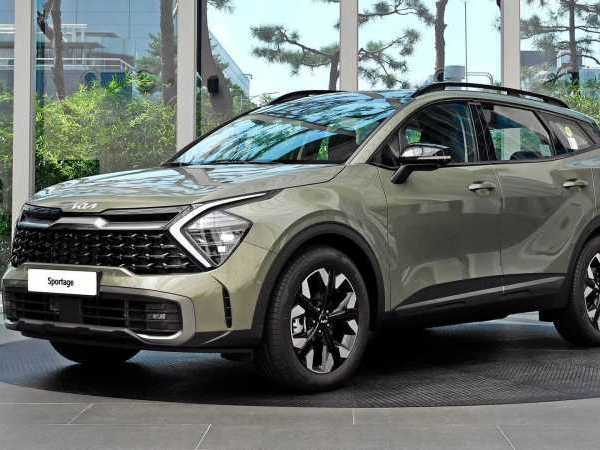
Kia Sportage: Superior Suspension for Smooth Ride
Kevin WongMay 19, 2025
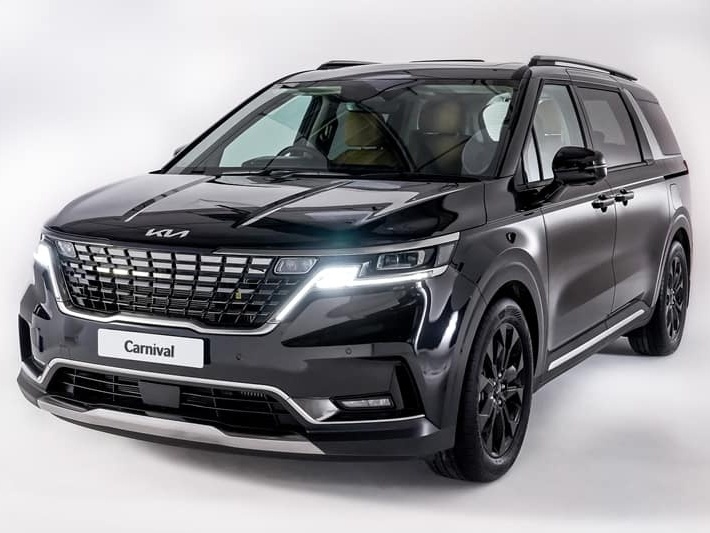
Kia Carnival: Spacious & Versatile for Every Journey
Kevin WongMay 19, 2025
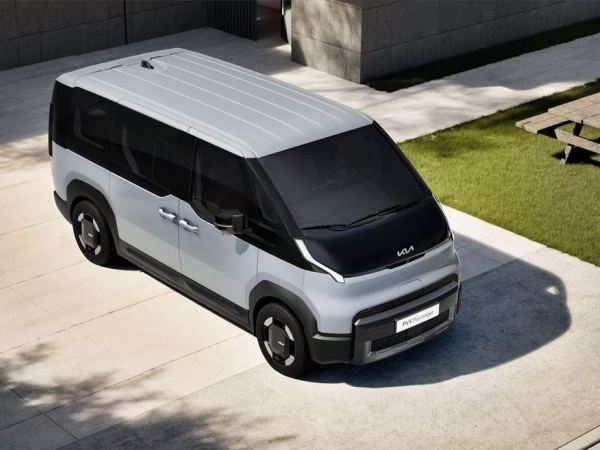
Kia reveals all details of PV5, with a maximum range of up to 400 kilometers
LienMar 11, 2025
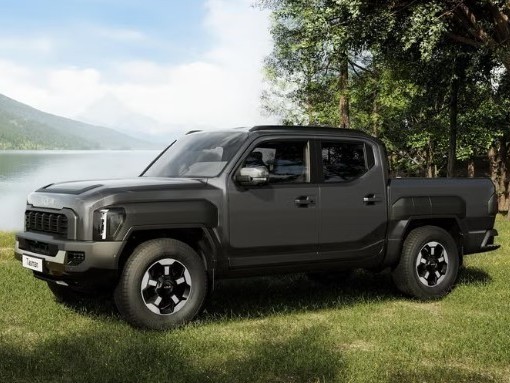
173L cargo box, 3500kg towing capacity, KIA Tasman meets all your needs!
MichaelOct 31, 2024

The interior of Kia's brand new pure electric sedan EV4 is exposed, expected to debut in mid-2025
MichaelOct 9, 2024
View More












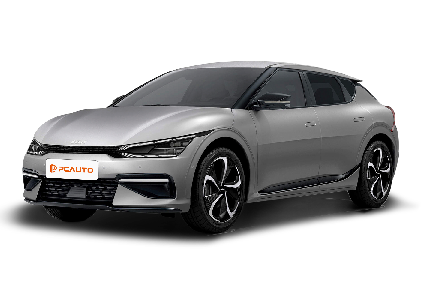
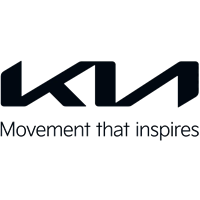 Cars
Cars




Pros
Cons